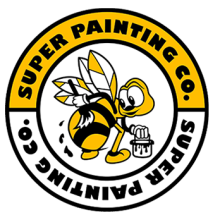When it’s time to give your home a fresh look, one of the big questions that might pop up is: “Should I go with a name-brand paint, or will that cheaper can do the trick?” It’s tempting to save a few bucks, especially with all the other costs that pile up during a renovation. But when it comes to paint, not all cans are created equal. Let’s break down whether name-brand paint is truly worth the splurge.
The Science behind the Splurge
You might wonder, “What’s in a name, anyway?” When it comes to paint, a lot more than you’d think. Major brands like Sherwin-Williams, Benjamin Moore, and Behr aren’t just slapping a fancy label on the can and calling it a day. These companies invest heavily in research and development to create formulas that go on smoother, cover better, and last longer. That means less paint, fewer coats, and a better-looking finish.
Cheap paints tend to be diluted with more fillers and fewer high-quality pigments. The result? It can take 3-4 coats just to achieve the same coverage a name-brand paint might offer in one or two. And if you’ve ever had to climb up and down a ladder for hours, you know that extra time (and hassle) is a cost in itself.
The Proof is in the Paint
Picture this: you’re painting your living room a dreamy shade of soft gray. You start with a low-cost paint, thinking you’ll save a few bucks. But as the roller glides across the wall, you notice streaks and patchiness. You keep adding more layers, but it’s still not looking right. Now you’re frustrated, and that “bargain” paint is disappearing faster than you can say, “Should’ve gone with the good stuff.”
Name-brand paints, on the other hand, are engineered for even coverage and rich colors. With a high-quality product, you’re less likely to see brush marks, uneven textures, or faded hues over time. That’s because these paints have better “hide” and “spread-ability” — in other words, they cover well and go a long way. So, that single gallon you bought might actually be more economical in the long run.
Durability Matters
If you’re painting a space that’s going to see a lot of action — think kitchens, hallways, or kids’ bedrooms — durability is key. Higher-end paints often come with added durability features, like mildew resistance, stain-blocking technology, and a finish that can stand up to scrubbing. Try scrubbing down a wall painted with bargain-bin paint, and you might end up with a discolored spot where you wore the color right off.
So, how do you decide? Let’s also break down the cons of using name-brand paint to help you make an informed choice before you dip that brush.
Cons of Name Brand Paint
Higher Initial Cost
There’s no getting around it: high-quality paint is more expensive. While the investment can pay off in the long run, it might feel like a blow to the budget when you’re shelling out $50+ a gallon compared to a $20 can of off-brand paint.
Overkill for Low-Traffic Areas
If you’re painting an area that doesn’t see much action — say, a guest bedroom or a rarely-used study — spending on premium paint might not be necessary. For these spots, a mid-range or budget option can work just fine without sacrificing too much in terms of aesthetics.
Limited Availability
Not every name brand is available at every store. Some, like Benjamin Moore, are only sold at specific retailers, which can limit your choices and make it inconvenient if you’re juggling a busy schedule. Store-brand paints, on the other hand, are widely accessible.
Can Be Overwhelming for DIYers
Sometimes, the very features that make premium paints so appealing can also make them a bit finicky to use, especially for first-time DIYers. High-quality paints dry fast, which is great for the pros, but it can be tricky if you’re not quick with the brush or roller.
Brand Hype vs. Real Value
Some brands charge a premium simply because of their reputation. In these cases, you might not be getting as much bang for your buck compared to a lesser-known brand that still offers great quality at a lower price point.
The Bottom Line
If you’re looking to paint high-traffic areas, demand durability, or just want to avoid the hassle of multiple coats, name-brand paints are generally worth the expense. But if you’re sprucing up a space where wear and tear aren’t big concerns, you might be just as happy with a more affordable option.
The Final Verdict
So, is name-brand paint worth the expense? For most homeowners, the answer is a resounding “yes.” When you factor in coverage, ease of application, and durability, high-quality paint can actually save you time, money, and a whole lot of headaches in the long run. Plus, let’s face it: the satisfaction of stepping back and admiring a smooth, flawless finish is worth its weight in gold.
At the end of the day, it comes down to knowing your project and your expectations. For those looking to invest in a professional finish that stands the test of time, name-brand paint is likely your best bet. But for a quick refresh or budget-friendly makeover? Feel free to give the underdogs a chance.
When you’re ready to take the plunge and pick up that paintbrush, don’t skimp on the foundation of your project. Investing in a premium paint can make all the difference between a job you’re proud of and one that leaves you regretting your shortcuts.
Super Painting Co. know that quality matters. That’s why we work exclusively with top-tier brands to ensure your walls look stunning today, tomorrow, and for years to come.





